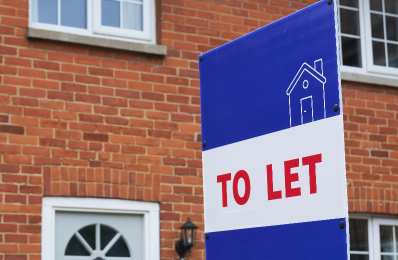19 DEC 2023 10 MIN READ
What is consent to let? A guide for landlords
If you’re a homeowner on a residential mortgage but are looking to rent out your property for a short period of time, you’ll need to get a consent to let agreement in place with your mortgage lender.
What is consent to let?
Consent to let is one of the only ways to rent out your property while still on a residential mortgage and is only used by those looking to rent their property out for a short period of time. It is not a type of mortgage, it is just a formal, written agreement between you and your mortgage lender that allows you to have tenants.
If you don’t get a mortgage lender’s permission before renting our a residential property, you’ll be in breach of your mortgage terms and that can have some pretty hefty consequences. Consent to let is just a short-term agreement and if you want to rent out long term, you’ll eventually need to change to a buy to let mortgage.
As consent to let agreements are meant for short term use only, here’s a few of the circumstances in which it’s a better choice than setting up your buy to let mortgage:
- Your insurance provider to see if you need to change your insurance to landlord insurance rather than private home insurance.
- Any housing associations or organisations that have rules about how a property can be used.

What valid reasons are there for getting consent to let?
As soon as you consider letting out your property, you should look into the right permission for that with your mortgage lender. Depending on your intentions, they’ll guide you on whether a consent to let agreement is enough or if you should be getting a buy to let mortgage arrangement instead.
As consent to let agreements are meant for short term use only, here’s a few of the circumstances in which it’s a better choice than setting up your buy to let mortgage:
You’re moving temporarily - like a short-term overseas contract, going travelling, or moving in with a relative who needs care – and intend to return to your property when the contract is complete.
You’re moving in with someone and want to rent out your existing property while you prepare to sell it.
If you’re locked into a fixed term mortgage and want to avoid early repayment charges, so you let the property out until the end of the fixed term.
You’re planning to get a buy to let mortgage but want to start renting out while you wait for completion of your new mortgage.
Is it illegal to rent a house without a buy-to-let mortgage?
In short, no it’s not illegal because you could have consent to let instead. A buy to let mortgage isn’t your only path if you want to rent out your property.
However, if you rent your home out without some sort of agreement in place with your mortgage lender, you’ll be in breach of your mortgage contract. That is considered mortgage fraud which is illegal.
What happens if I rent without consent to let?
The consequences can range from a penalty fee to your mortgage rates being raised, to demanding you pay back your loan immediately and repossessing your home if you can’t. Therefore, it’s important that if you want to rent out your property you have either consent to let or a buy to let mortgage in place.
What are the costs for consent to let?
There are quite a few costs to consider when setting up a consent to let agreement. Your lender will usually charge some type of fee, whether it’s a one off fee or and extra percentage on your mortgage will depend on who your lender is.
But when you set up a consent to let agreement, you’re also becoming a landlord, which has it’s own set of costs. This might include: landlord insurance, letting agent fees, legal fees for contracts, and taxes on your rental incomes. You may also need to get gas and electrical safety checks done and update your property to comply with fire safety regulations.
In short, there can be a lot of costs associated with renting out your property, so make sure you’re prepared for those when becoming a landlord.
Why could I be refused consent to let?
The criteria for getting a consent to let agreement will vary depending on your lender, but here’s a few examples of reasons a mortgage lender might deny your consent to let request:

You’ve held a mortgage with them for less than 6 months.
You want more tenants than they allow on a consent to let agreement.
You don’t meet their equity threshold for how much of the property you need to own before they allow this.
You don’t meet their minimum income requirement.
Your mortgage payments are not up to date or you have missed payments a few times in the past.
You’re on a help to buy mortgage or have a shared ownership which restricts your ability to let out the property.
What are the pros and cons of getting consent to let?
Getting consent to let means that you intend for at least a short time to become a landlord and that’s a serious responsibility to consider. Let’s take a look at the benefits and drawbacks of using the consent to let route for letting out your property:
You might get enough rental income to cover the mortgage of one of your properties while you’re moving.
If you’re travelling short term, it can give you income when you’re not working.
It’s a short term test of being a landlord so you can see how it is before committing to a buy to let mortgage.
The process of getting set up can be a lot faster than setting up a buy to let mortgage.
It can help you to avoid early repayment charges if you want to move now but can’t remortgage or sell your property yet.
You may be charged a higher interest rate or a mortgage fee.
The costs of getting your property ready to let out may outweigh the income you’ll earn.
If you struggle to find tenants, you’ll still be on the hook for your mortgage repayments.
Being a landlord comes with a lot of responsibilities and regulations such as paying for repairs and maintenance for tenants.
Tenants don’t always respect the property in the same way that you do, so you may fins more wear and tear on furnishings and fixtures than when you lived there.
How long does consent to let last? What happens when it runs out?
Consent to let is only supposed to be used as a stopgap while you figure out next steps, so it’s often only valid for six to twelve months – but sometimes can be for as much as two years.
When the end of your agreement is coming up, you can either revert back to the conditions of your residential mortgage and stop letting the property out or you can look into setting up a buy to let mortgage which would allow you to continue renting out the property.
Your current lender might over to convert your existing mortgage to a buy to let or you might want to shop around with different lenders to see if you can get a better rate.
What is the difference between consent to let and buy-to-let?
Consent to let is an agreement that is added on to your existing mortgage but it is not a type of mortgage. Buy to let is a specific mortgage type that enables you to let out your property in the long term – it’s specifically made for people who plan to be a landlord for an extended time period.
Frequently asked questions
If you’ve still got questions about how consent to let works, hopefully what you’re wondering about is answered in the FAQs below:
Usually this is not possible, but it is worth double checking the terms of your help to buy scheme or enquiring about your specific circumstances. However, for most people letting out the property on consent to let would be considered subletting which is often prohibited on any shared ownership properties.
Even if you’re still living in the property and are just letting out a spare room, you’ll likely need consent to let in order to do this legally. Definitely consult your mortgage lender before taking in a lodger, particularly if you intend for it to be a long-term arrangement.
The fees associated with getting your consent to let agreement in place should count as an allowable expense for landlords. Always double check with an accountant if in double, but you should be able to claim tax relief on this in your tax returns as it is a cost that is incurred exclusively for the purpose of renting out your property.
You don’t need permission from them, however you absolutely need to tell them that you plan to rent out your property. It is possible that your current home insurance policy doesn’t cover everything that you want it to when you’re letting out the property, so you may need to switch to a landlord insurance policy instead. Some mortgage lenders might even require you get landlord insurance as a condition of granting their consent to let.
Some lenders now have specific terms and conditions related to this as it has become a popular use for additional properties. Each lender may have their own criteria and rules regarding this, so it’s best you check with your mortgage lender on whether you need consent to let, a buy to let mortgage or a different arrangement in order to do this.
Believe it or not, but there are actually a lot of restrictions on this and many buy to let mortgages prohibit renting out to immediate family members. Often buy to let mortgages want you to charge rent that is at least 125% of the monthly mortgage value, but when renting to family you may want to only charge enough to cover the mortgage.
There are specific “family buy to let mortgages” that might enable you to have family members let the property from you at rental rate that just covers 100% of the monthly mortgage costs with no additional buffer on top.
It is worth checking with your mortgage lender if their consent to let agreements or their buy to let mortgages have any restrictions on letting to family.
You let it, we protect it – from
just £177 a year*
- Tailorable cover you choose to match your needs
- Cover for up to ten properties with one policy
- 0% interest on monthly instalments
- In-depth how-to guides in our landlord insurance hub
All links are checked and valid at time of publishing, 19 December 2023.
*10% of our customers paid this or less between January and March 2025.
